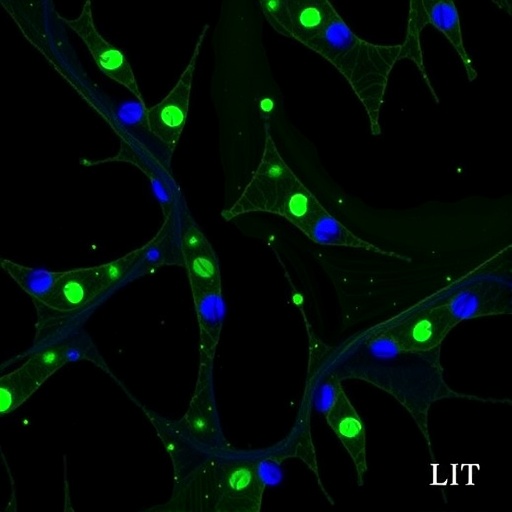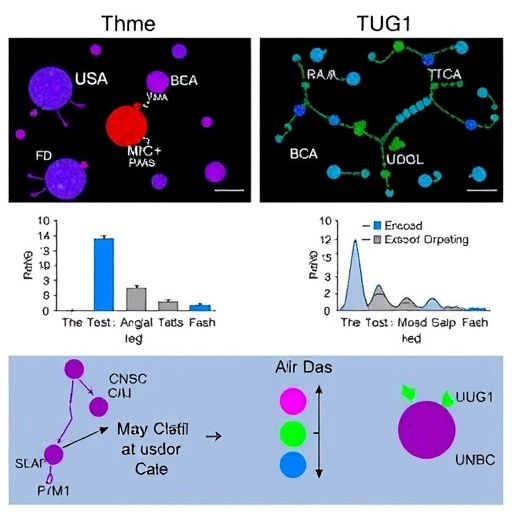Map of myeloid immune cell subpopulations points to new targets for immunotherapy
The recent emergence of immunotherapy has marked a sea change in research and care for many forms of cancer, bringing new hope to patients and families around the world. For those who respond to treatment, the results can be dramatic. Activation of a patient’s immune system against cancer can kill or shrink tumors and, in some cases, lead to complete remission.
Despite significant advances, only a minority of individuals benefit from immunotherapy, and the reasons why remain unclear.
Immunotherapy research has largely centered on T-cells, a type of immune cell that learns to recognize specific proteins and launch an attack. Tumors, however, are a complex mixture of many different cell types, including other immune cells known collectively as tumor-infiltrating myeloid cells. These cells represent alternative targets for immunotherapy, but their role in tumors is still poorly understood.
To shed light on this under-examined family of immune cells, Harvard Medical School researchers based at the Blavatnik Institute, Massachusetts General Hospital, Beth Israel Deaconess Medical Center and Brigham and Women’s Hospital used single-cell sequencing to map the landscape of myeloid cells in tumors from patients with lung cancer.
Their study, published online in Immunity on April 9, reveals 25 myeloid cell subpopulations, many previously undescribed, with distinct gene expression signatures that are consistent across patients. Most of these subpopulations were also identified in a mouse model of lung cancer, indicating a high degree of similarity in myeloid cells across species.
The findings serve as a foundation for future research to explain the precise roles of myeloid cells in cancer and to assess their potential as targets for new or improved immunotherapies, the authors said.
“Immunotherapy is clearly a transformational approach to cancer treatment, but there are many patients who don’t respond, and the question is why,” said co-corresponding author Allon Klein, assistant professor of systems biology at HMS.
“Part of the answer could certainly lie at the level of myeloid cells, which interact heavily with both tumor cells and T-cells,” Klein continued. “By identifying the rich complexity of myeloid cell states in tumors, we now have a powerful starting point to better understand their functions and clinical applications.”
Of particular importance, the authors said, was the finding that myeloid subpopulations can be reliably identified in different human patients and in mice–an observation that underscores the fundamental use of mouse models in immunotherapy research.
“Tumor cells were different in each patient analyzed, but the identity of tumor-infiltrating myeloid cells greatly overlapped between the same patients. Also, many myeloid populations were incredibly well conserved across patients and mice,” said co-corresponding author Mikael Pittet, HMS associate professor of radiology at Mass General.
“This is exciting because a growing body of evidence based on mouse studies suggests that myeloid cells can control cancer progression and affect virtually all types of cancer therapy, including immunotherapy” Pittet added.
Consistent complexity
Myeloid cells–comprised of immune cells including monocytes, macrophages, dendritic cells and granulocytes–are part of the innate immune system, the body’s first and broad line of defense against foreign pathogens. They play an important role in activating the adaptive immune system, including T-cells, which can precisely target and destroy pathogens.
To better understand the diversity of myeloid cells in tumors, Pittet teamed with Klein, who led the development of InDrops, a key technique for single-cell gene expression analysis. In the current study, Pittet, Klein and colleagues applied this technique to tumors from a small group of patients and mice with non-small cell lung cancer. In total, they collected gene expression data from more than 56,000 individual cells, one cell at a time.
Their analyses revealed myeloid cell gene expression signatures that fell into 25 distinct clusters, greatly expanding the number of known myeloid cell states.
They found that dendritic cells, for example–which Pittet and colleagues previously found are critical to successful anti-PD-1 immunotherapy in mice–contained four different subtypes that are largely mirrored between humans and mice. Monocyte subtypes also matched well between humans and mice, while macrophages were both conserved and varied by species.
Neutrophils, which are the most abundant white blood cells in mammals, formed a spectrum of five similar subtypes in humans and mice, with one subset unique to mice. Pittet, in a previous collaboration with Klein, found that neutrophils expressing high levels of the gene Siglecf have tumor-promoting properties. The new analyses corroborated this finding, showing that these neutrophils are highly enriched in tumors.
“Myeloid cell populations are complex, but we see the same complexity across patients and species, which gives us confidence that insights in mouse models can be translated to humans,” said Pittet, who is director of the Cancer Immunology Program in the Mass General Center for Systems Biology.
“Now that we have this granular landscape, we can better design studies to assess the role of unique subpopulations in tumor progression and look for ways to manipulate specific cells in the hopes of making immunotherapies more effective,” Pittet added.
For example, with the landscape of myeloid cell gene-expression patterns mapped, scientists can mine existing datasets of patients with known clinical outcomes to look for the presence of a given population of myeloid cells and assess their relationship with patient survival.
Klein, Pittet and colleagues examined the feasibility of this approach in their study and found promising candidates but will need larger patient sample sizes to draw conclusive results. For this effort they teamed with Raphael Bueno, HMS professor of surgery at Brigham and Women’s, and Elena Levantini, HMS instructor in medicine at Beth Israel Deaconess, who were studying patient survival-associated factors in lung cancer specimens.
“Lung cancer remains a common lethal malignancy in the U.S., and this important collaborative effort provides new clues and directions in the development of personalized therapies for patients with lung cancer and no other good therapeutic options,” said Bueno, who is chief of the Division of Thoracic Surgery and the Fredric G. Levin Distinguished Chair in Thoracic Surgery and Lung Cancer Research at Brigham and Women’s.
The team also looked at whether the behavior of myeloid cells in tumors could be gleaned by sampling myeloid cells circulating in blood and found a poor relationship between the two.
In addition to immediate basic and translational research opportunities, the study findings inform the work of initiatives such as the Human Tumor Atlas, an effort to map the landscape of all cell types in the human body, and the Human Tumor Atlas Network, an effort to create atlases of a wide variety of cancer types in cellular and molecular detail.
“This work fits into a single-cell revolution that’s happening in many areas of biomedicine, particularly in immunology,” Klein said. “To improve immunotherapies, we need to know as much as we can about the cells and processes involved. This requires a true team effort, and our study couldn’t have been possible without fantastic collaborations across the medical school.”
###
Virgina Savova is co-first and co-corresponding author of the study. Rapolas Zilionis, Camilla Engblom and Christina Pfirschke are co-first authors. Additional authors include David Zemmour, Hatice Saatcioglu, Indira Krishnan, Giorgia Maroni, Claire Meyerovitz, Clara Kerwin, Sun Choi, William Richards, Assunta De Rienzo, and Daniel Tenen. Bueno and Tenen supervised the collection of human patient samples.
The work was supported by the National Institutes of Health (grants R01-AI084880, R01-CA206890, P50-CA86355, R33-CA212697, R01-CA218579 and HL131477-01A1), the Samana Cay MGH Research Scholar Fund, the Robert Wenner Award from the Swiss Cancer League, an Edward J. Mallinckrodt Jr. Fellowship, Boehringer Ingelheim Fonds PhD fellowships, a Tosteson Postdoctoral Fellowship, a Singapore Translational Research Investigator Award and a NCIS Yong Siew Yoon Research Grant.
Media Contact
Ekaterina Pesheva
[email protected]
Related Journal Article
https:/
http://dx.




